PLEASE NOTE: The information in this blog is for educational purposes only. It is not a substitute for professional medical advice. Consult your healthcare provider if you’re seeking medical advice, diagnoses, or treatment.
When you think of plants, you’re likely to think of something positive. Maybe you thought of a lush backyard garden, a beautiful bouquet on a wedding day, or your trusty snake plant by the window.
These warm, fuzzy feelings extend to diet as well.
Aside from children’s innate distaste for plants, most people have come to believe the claims that plants are good for you. But are they? There is some truth to this, but grains, vegetables, legumes, and other plant foods have a dark side that’s regularly overlooked.
As you’ll learn in this article, plants have developed thousands of defense mechanisms that just might be taking a toll on your health!
What Are Plant Defense Chemicals?
Believe it or not, plants are not on this earth to wind up on a plate at the local vegan restaurant. They have hundreds of millions of years of evolution under their belt, and they’d prefer not to be eaten. Like any living being, plants want to survive and pass their DNA on to the next generation.
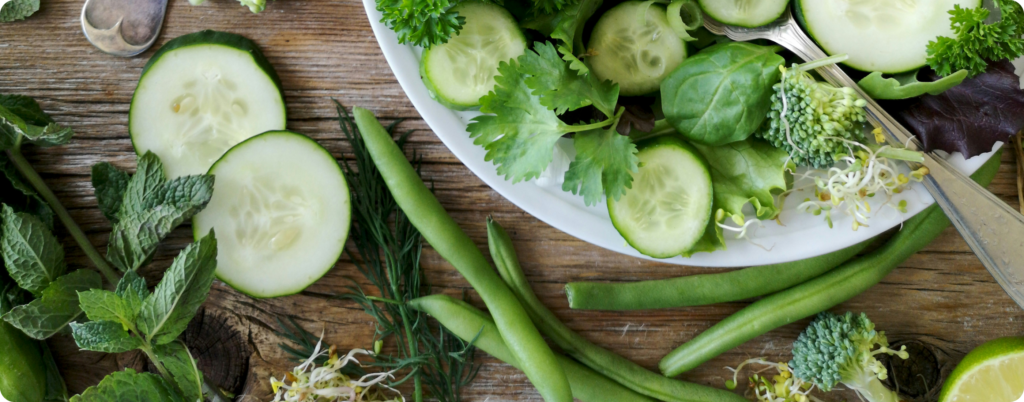
Plants must contend with not only hungry humans but also insects, bacteria, fungi, and other animals (1).
Most plants can’t run away, bite, or physically fight back like a human or a lion would.
To defend themselves, plants produce toxins and have developed an innate immune system to constantly monitor for threats (2, 3). Plants can even release compounds that attract enemies of the herbivores that are consuming them (4).
Due to millions of years of predation, plants have developed over 50,000 defensive strategies (5, 6, 7).
We’ll highlight a few of these defense mechanisms found throughout the modern diet!
6 Antinutrients To Be Aware Of
Known as antinutrients, plants contain synthetic compounds that can hinder nutrient absorption and offer protection from the surrounding environment (8, 9). When consumed in excess, antinutrients found in plants may cause harm.
Some plant compounds have health benefits, but others can be toxic or fatal for humans (10). This is not an exhaustive list, but here are 6 common antinutrients to be aware of (11):
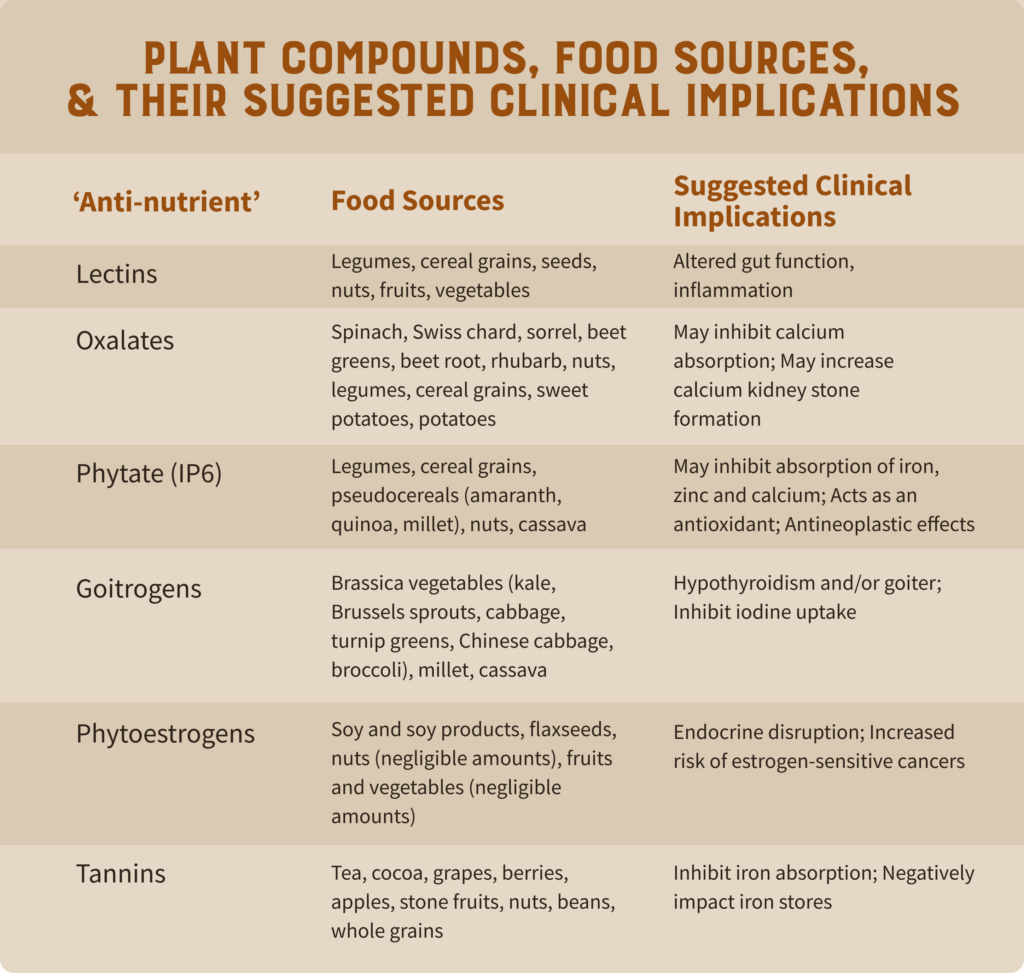
1. Lectins
Lectins are proteins found throughout nature that bind to carbohydrates and provide protection for the plant (12). Lectins are found in beans, potatoes, carrots, tomatoes, soybeans, peas, and cherries (13).
When prepared improperly, lectins may lead to food poisoning (14). They can also alter digestion and absorption of nutrients, hinder the growth of animals, and may contribute to autoimmune diseases (15, 16).
2. Oxalates
Plants create oxalates for defense, calcium regulation, and the removal of heavy metals (17). In humans, oxalates reduce the bioavailability of key minerals (like calcium and magnesium) and are a known risk factor for kidney stone formation (18, 19)
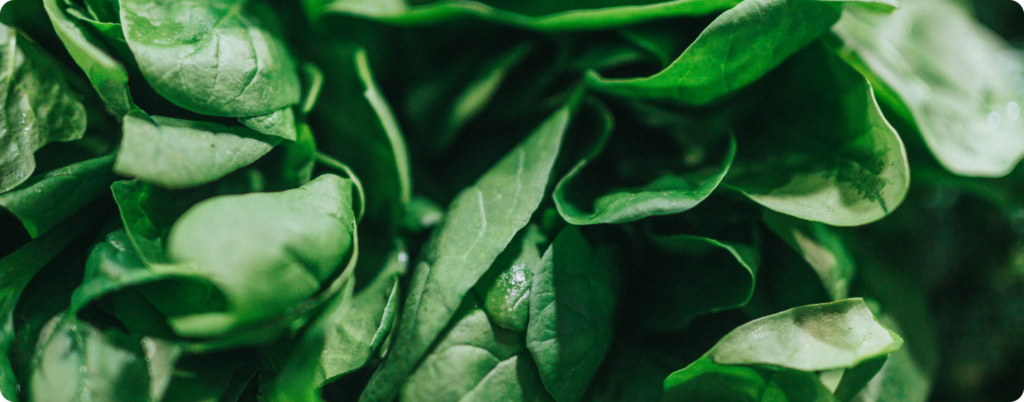
Take spinach, for example. It’s commonly referred to as a great source of calcium, yet much of it isn’t accessible due to its high oxalate content (20).
100 grams of spinach (about 3.5 ounces) contains over 1000 mg of oxalate on average (21)! 50-200 mg of oxalates per day doesn’t appear to cause issues, but individuals with a damaged gut or preexisting kidney problems may have issues with high-oxalate foods (22).
Aside from spinach, sweet potatoes, beets, rhubarb, amaranth, star fruit, soybeans, and swiss chard have some of the highest oxalate levels (23, 24). Tea, raw legumes, nuts, and whole grains also provide oxalates.
3. Tannins
Tannins are naturally occurring compounds found mainly in tea, berries, apples, whole grains, nuts, legumes, and wine (25). While the impact of tannins is thought to be largely positive, they can negatively affect iron stores when consumed excessively. It’s important to note that the presence of phytates clouds the findings of certain studies (26).
4. Phytates
Phytate (also known as phytic acid) is a naturally occurring component found in grains, legumes, nuts, and seeds that hinders iron absorption (27). It can also limit the absorption of calcium, magnesium, copper, and zinc (28, 29).
5. Goitrogens
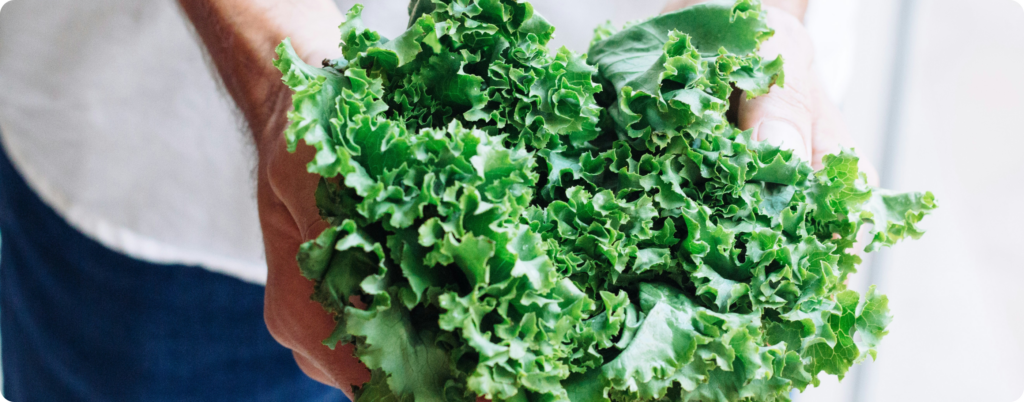
A goitrogen is an agent that may increase the risk of thyroid disease, goiter (an enlarged thyroid gland), or interfere with thyroid function and hormone synthesis (30, 31). These are primarily found in soy products and cruciferous vegetables like kale, broccoli, and cauliflower (32).
6. Phytoestrogens
Plants produce compounds called phytoestrogens that are found primarily in soy products, nuts, seeds, grains, and fruits (33, 34).
Phytoestrogens are reported to have numerous benefits, but high doses can harm the reproductive function of adults (35). A study from 1975 put together a lengthy list of plants used as anti-fertility agents; 60% contained phytoestrogens (36).
The estrogenic effect of phytoestrogens may be helpful for someone in menopause, while at the same time, they may be detrimental if estrogens aren’t needed (such as in a young kid or a man looking to reproduce).
How to Reduce Plant Defense Chemicals
While excessive consumption of certain plant foods may spell trouble for your health, numerous strategies exist to reduce (or eliminate) antinutrients before they reach your plate.
If you still want to consume vegetables or beans, consider implementing these strategies:
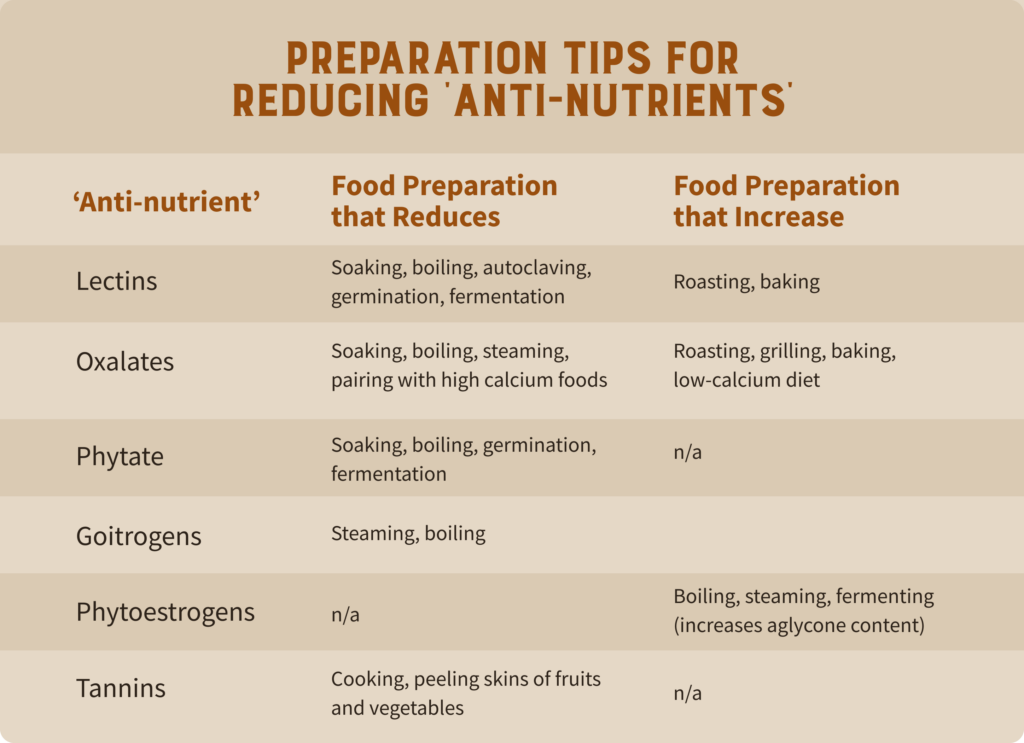
Lectins are highly resistant to heat and pH changes, but fermentation, sprouting, and boiling can reduce or eliminate lectins (37, 38). These same techniques can also remove phytates and improve mineral bioavailability.
Even simple and cheap strategies like soaking, peeling, and pressure cooking can remove antinutrients (39, 40). These processes tend to involve water because many antinutrients are water soluble, meaning they can dissolve in water (41).
Eating seasonally based on your location is another strategy to cut down on excessive antinutrient consumption.
When the proper steps are taken, reducing the antinutrients and improving the digestibility of vegetables, legumes, and other plant foods is possible!
The Animal-Based Diet & Least Toxic Plant Foods
The diet we advocate for, known as the animal-based diet, aims to eliminate highly processed foods and prioritize the least toxic plant foods.
What does this mean?
We suggest you avoid or limit plant foods such as leaves, stems, roots, and seeds (nuts, grains, legumes). These tend to contain the highest concentrations of defense chemicals and may contribute to autoimmunity, joint pain, and digestive issues if overconsumed (42, 43, 44). Fruits contain antinutrients but tend to be found in smaller amounts.
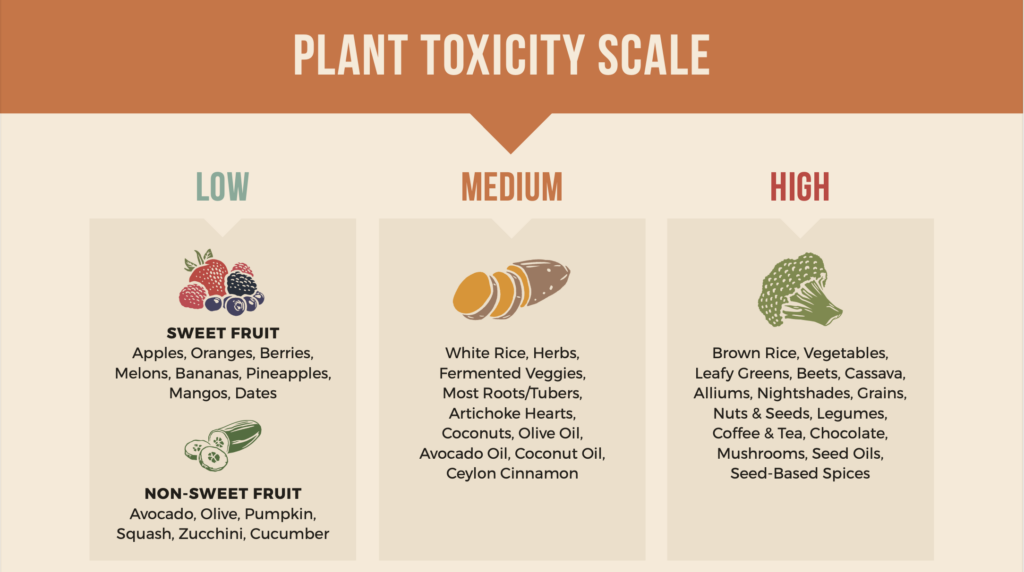
The animal-based approach focuses on high-quality ruminant animal meats, organs, raw dairy, eggs, fruit, honey, and maple syrup. Fermented vegetables (such as sauerkraut), pickles, organic white rice, or sweet potatoes may also be included if tolerated.
Vegetables May Not Be As Friendly As They Seem…
People have known for centuries that plants provide medicinal benefits but can also be highly toxic. Instead of aimlessly eating plant foods because they’re a “superfood,” people knew they had to use practices such as soaking or fermentation to reduce potential ill effects.
Are veggies or a bowl of black beans 100% bad for you? Definitely not! However, these foods often require careful preparation. If consumed excessively or improperly, they may contribute to autoimmune issues, joint pain, or a variety of other unpleasant symptoms.
The idea that plant foods are all inherently good for you is missing critical context. Some caution is needed as plants are well suited to fend off predation, including from humans.
Subscribe to future articles like this: